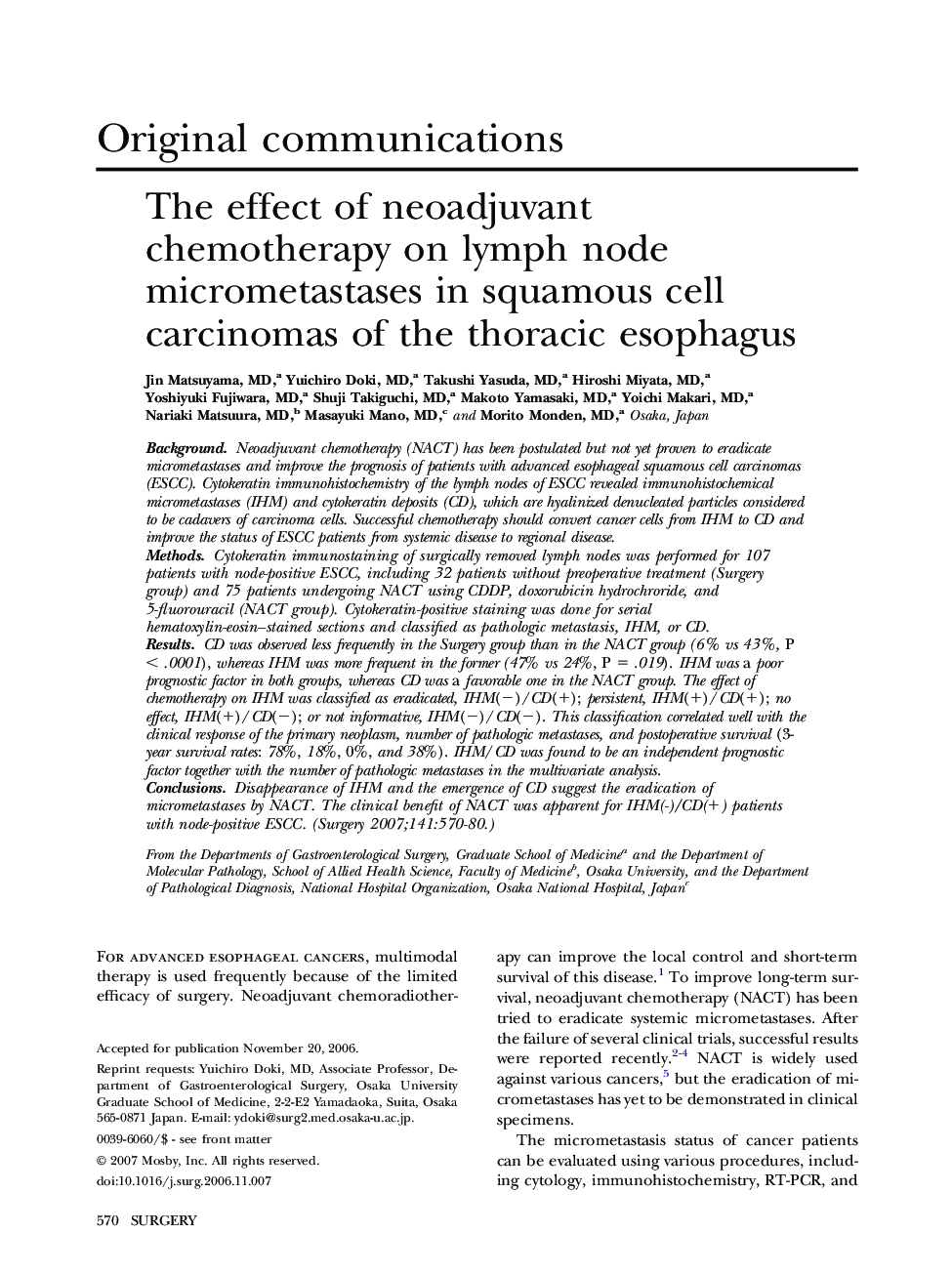| Article ID | Journal | Published Year | Pages | File Type |
|---|---|---|---|---|
| 4309701 | Surgery | 2007 | 11 Pages |
BackgroundNeoadjuvant chemotherapy (NACT) has been postulated but not yet proven to eradicate micrometastases and improve the prognosis of patients with advanced esophageal squamous cell carcinomas (ESCC). Cytokeratin immunohistochemistry of the lymph nodes of ESCC revealed immunohistochemical micrometastases (IHM) and cytokeratin deposits (CD), which are hyalinized denucleated particles considered to be cadavers of carcinoma cells. Successful chemotherapy should convert cancer cells from IHM to CD and improve the status of ESCC patients from systemic disease to regional disease.MethodsCytokeratin immunostaining of surgically removed lymph nodes was performed for 107 patients with node-positive ESCC, including 32 patients without preoperative treatment (Surgery group) and 75 patients undergoing NACT using CDDP, doxorubicin hydrochroride, and 5-fluorouracil (NACT group). Cytokeratin-positive staining was done for serial hematoxylin-eosin–stained sections and classified as pathologic metastasis, IHM, or CD.ResultsCD was observed less frequently in the Surgery group than in the NACT group (6% vs 43%, P < .0001), whereas IHM was more frequent in the former (47% vs 24%, P = .019). IHM was a poor prognostic factor in both groups, whereas CD was a favorable one in the NACT group. The effect of chemotherapy on IHM was classified as eradicated, IHM(−)/CD(+); persistent, IHM(+)/CD(+); no effect, IHM(+)/CD(−); or not informative, IHM(−)/CD(−). This classification correlated well with the clinical response of the primary neoplasm, number of pathologic metastases, and postoperative survival (3-year survival rates: 78%, 18%, 0%, and 38%). IHM/CD was found to be an independent prognostic factor together with the number of pathologic metastases in the multivariate analysis.ConclusionsDisappearance of IHM and the emergence of CD suggest the eradication of micrometastases by NACT. The clinical benefit of NACT was apparent for IHM(-)/CD(+) patients with node-positive ESCC.
